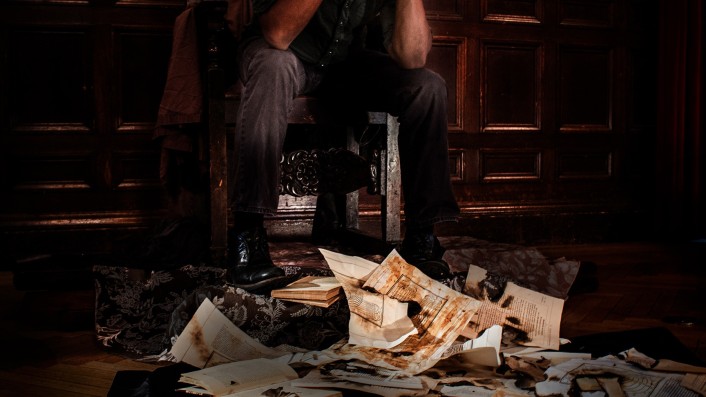Tamburlaine: An Opera Frieze

This dynamic work by composer, Jonathan Dawe, presents the fractal, operatic retelling of Tamburlaine - a story of hunger, remorse, and redemption.
Featuring pioneering countertenor Derek Lee Ragin, the musical ensemble Decoda, Persian Santur player Amir Elsaffar, and monstrous puppet battle ballets.
American poet, Alyssa Morhardt-Goldstein, draws abstractly from Christopher Marlowe’s play of 1587, reshaping the narrative into a compelling post-modern landscape.
“This new dynamic work presents the modern telling of the story of Tamburlaine, featuring pioneering countertenor Derek Lee Ragin, the musical ensemble Decoda, Persian Santur player Amir Elsaffar, and monstrous puppet battle ballets.
Tamburlaine is seventy and old, seated on his broken throne, slumped over among the remains of burnt books and charred sacred papers. Now alone at the end of his harsh reign, he reflects upon his past. And then…he is seventeen, a boy casting off his shepherd’s garb in preparation for his rapid assent to power that in a dangerously short period of time will lead to the conquest of much of the then-known world. Through a series of dramatic flashbacks, the memories of this bold central-Asian conqueror are relived.
His past unfolds in emotional complexity with deep levels of awe and touching regret. Ferocious conquests of Persia, Asia Minor, and North Africa, his passionate yet fated love of a Persian princess, the imprisonment and demise of a Turkish emperor, his stern relationship with his sons that lead to the work’s shocking conclusion — Tamburlaine projects a dark dramatic ride. Intensified into a 60-minute work and staged tightly in spatial planes representing moments in time and history, this work pioneers an entirely new post-modern genre, an opera frieze.
The music draws in places upon fractured fragments of Handel’s Tamerlano as well as Persian, Turkish, and West African rhythms. Recasting these Baroque borrowings and materials using compositional workings based upon fractal geometry, a decisively new musical world is created resonating in sounds of the past. American poet, Alyssa Morhardt-Goldstein, draws abstractly from Christopher Marlowe’s play of 1587, reshaping the narrative into a compelling post-modern landscape.
Presented in New York City in two performances, the premiere production will be directed by Alastair Boag. The vocal cast of four (the lead role sung in both countertenor and baritone range) will be accompanied by an instrumental ensemble of nine (including a Persian santur) all staged amidst provocative paper puppets of all size and look.”

